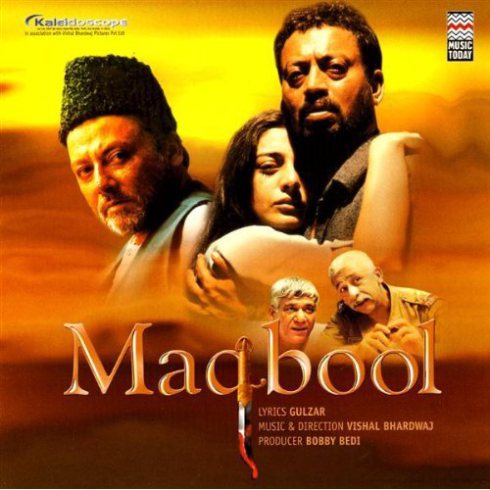RGV, Bharadwaj & the ‘underworld’ film:
It is a stormy, windy Mumbai night. A pander draws a chawk, an astrological chart, on a car’s windowpane – the future forebodes ill. Soon after, someone is murdered and blood spurts and splashes across the window glass and the rhombus of the chart that is now symbolically Mumbai. Saari Mumbai khoon se bhaar di (Look! You have drenched the whole of Mumbai in blood), mutters an irritated constable.
Thus begins Vishal Bharadwaj’s powerful and intriguing Hindi film Maqbool (2003), an adaptation of William Shakespeare’s Macbeth (1606). The title of the film itself is resonant enough of the original, and the early 17th century English play and this early 21st century Hindi film have quite a few parallels.
The opening scene itself is a very good instance of one of them. It is set on a windy, stormy night in both the film as in the play. While the witches enigmatically state Fair is foul and foul is fair, thus establishing the atmosphere of the Shakespearean play; the gory future of Mumbai is foretold in the film. Like Cawdor, a traitor is slain in the film; the difference being, while that was off-scene in the play, it is visually represented in the film. With a master-stroke, Bharadwaj, through the chawk, makes Fate and blood come together at the very beginning of Maqbool. And the constable’s response only warns the audience of the inevitability of bloodshed.
However, while the opening scene is a brilliant example of Bharadwaj’s ingenious use of parallels, it is not the only one in the film. The whole film, in fact, is replete with many such instances. They are however not the USP of the film. These linkages are obvious and fairly superficial; any sensitive reader of the Shakespearean play will at once recognize the parallels when he watches the film even for the first time.


